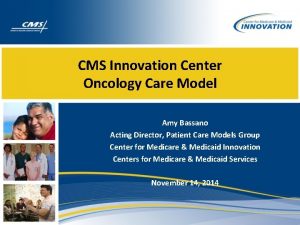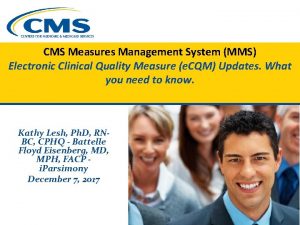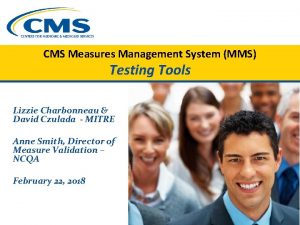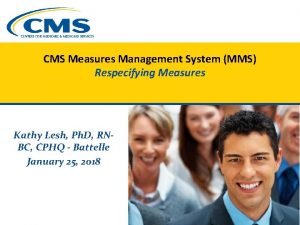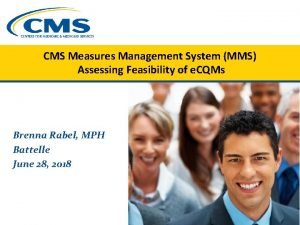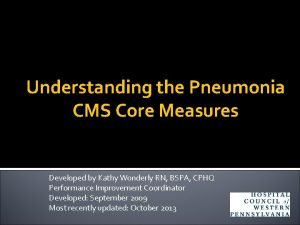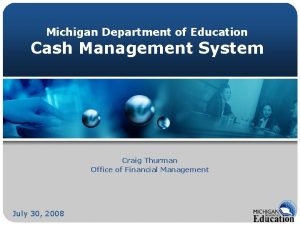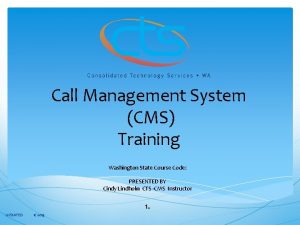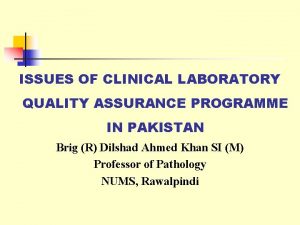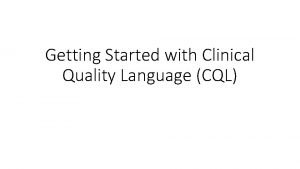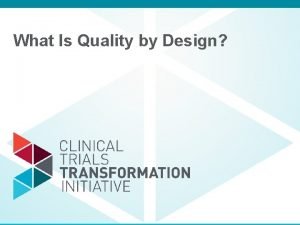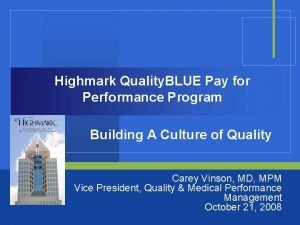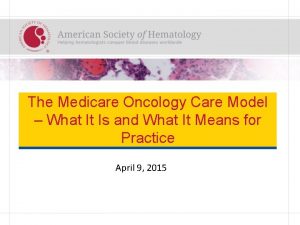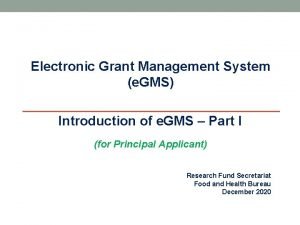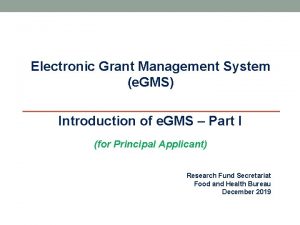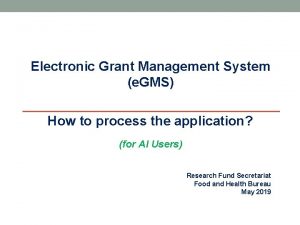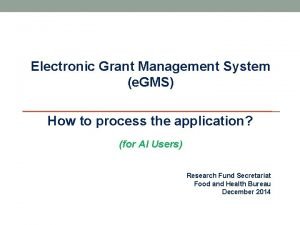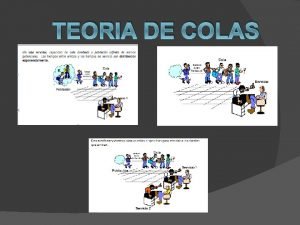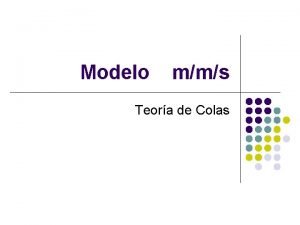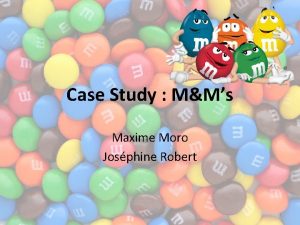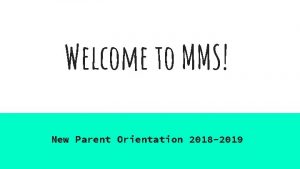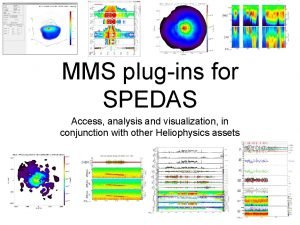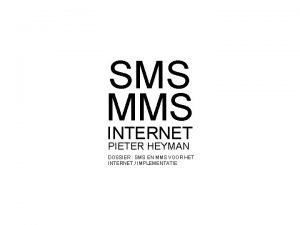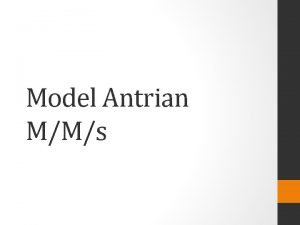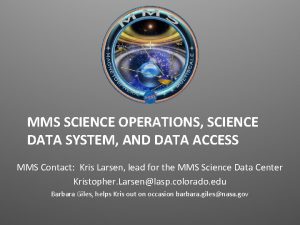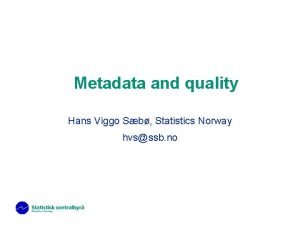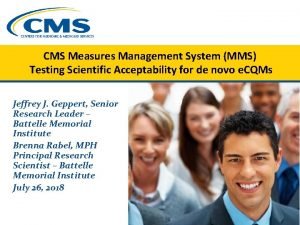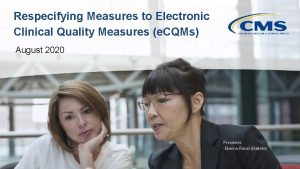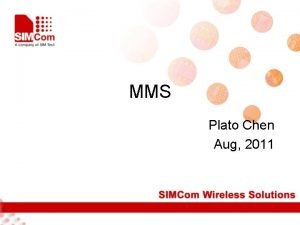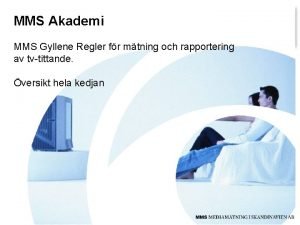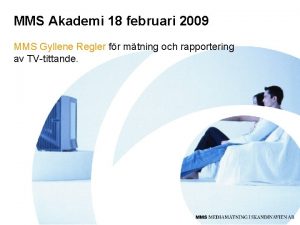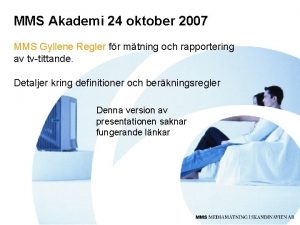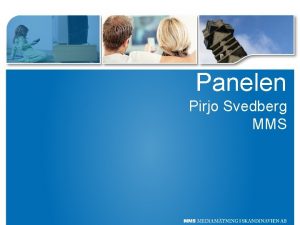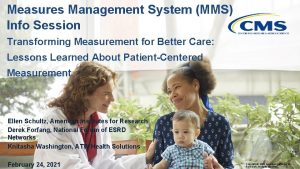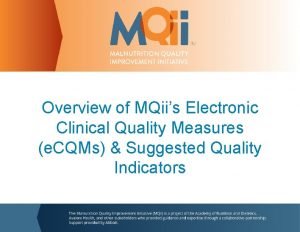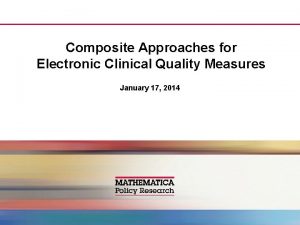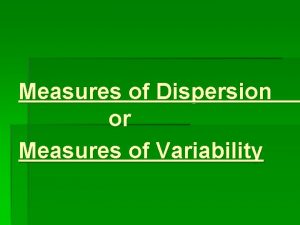CMS Measures Management System MMS Electronic Clinical Quality

































- Slides: 33

CMS Measures Management System (MMS) Electronic Clinical Quality Measure (e. CQM) Updates. What you need to know. Kathy Lesh, Ph. D, RNBC, CPHQ - Battelle Floyd Eisenberg, MD, MPH, FACP i. Parsimony December 7, 2017

Overview • Review of electronic clinical quality measures (e. CQMs) • What’s happened this past year – Addenda – Clinical Quality Language • What it means for you • Questions 2

e. CQM Updates Learning Objectives: • At the end of this webinar, participants will be able to: – Explain, at a high level, what is an e. CQM – Describe the e. CQM Addenda – Discuss the impact of the Addenda – Understand where Clinical Quality Language (CQL) fits into e. CQMs – Discuss the benefits of CQL 3

What is an e. CQM? • An e. CQM is a clinical quality measure specified in the Health Quality Measure Format (HQMF), plus other components • HQMF is a Health Level Seven International (HL 7) standard for representing a clinical quality measure as an electronic document (Extensible Markup Language [XML] format) • Ideally, the HQMF provides for measure consistency and unambiguous interpretation • HQMF provides the syntax (document structure), but does not specify where in the EHR the data must be/can be found 4

How is an e. CQM different from other types of clinical quality measures? • e. CQMs require the use of standards and tools • Health information technology, usually an EHR, is the primary source of data for an e. CQM • Data in the EHR should be captured as part of regular workflow • Other electronic data may be captured, e. g. , from a laboratory information system • The logic must be explicitly stated • e. CQMs require additional steps to map measure data elements to corresponding information model components and standard terminologies to assemble the data criteria 5

Annual Updates • e. CQMs have been around for more than five years • Annual updates published every spring beginning with 2014 reporting/performance period – Updates to code systems – Updates to logic – Minor changes 6

Who uses e. CQMs? • Initially, only the EHR Incentive programs used e. CQMs • Now e. CQMs used by – Hospital Inpatient Quality Reporting Program – Quality Payment Program • Merit-based Incentive Payment System • Alternative Payment Models – Medicare and Medicaid EHR Incentive programs for eligible hospitals and critical access hospitals – Medicaid EHR Incentive Program for eligible professionals 7

How many e. CQMs are there? • Initially 29 eligible hospital measures and 64 eligible professional measures • As of now (2017 reporting): – 16 eligible hospital measures – 55 eligible clinician/eligible professional measures 8

Standards to Create an e. CQM • Quality Data Model (QDM) – Provides the grammar to express e. CQMs – Each QDM element is composed of a category of information, a datatype (or context of use), and a value set – The value set defines the specific instance of the category by assigning a set of values (or codes) – Existing value sets are available in the Value Set Authority Center (VSAC) • Clinical Quality Language (CQL) • Value sets are created in the VSAC using standard terminologies 9

Standard Terminology • e. CQMs rely on standard terminologies to capture data for quality measurement – Systems need to support terminology standards such as LOINC, Rx. Norm, and SNOMED CT – Terminology and data element requirements may necessitate EHR vendors to redesign and reconfigure workflows and data entry mechanisms to meet the measure collection requirements • Terminology differences, which define the numerators, denominators, exclusions, and exceptions, create differences in the populations of chart-abstracted measures as compared with e. CQMs 10

Tools to Create an e. CQM • Measure Authoring Tool (MAT) – A web-based tool for measure developers to author e. CQMs – Uses the QDM, links with VSAC, outputs HQMF – https: //www. emeasuretool. cms. gov • Value Set Authority Center (VSAC) – https: //vsac. nlm. nih. gov 11

Measure Authoring Tool (MAT) 12

Value Set Authority Center (VSAC) 13

Quality Reporting Document Architecture (QRDA) • QRDA is a Clinical Document Architecture (CDA)-based HL 7 standard for reporting quality measure data • Two types in use – QRDA category I – patient-level – QRDA category III – aggregated patient data calculated from QRDA category I documents • QRDA is the file submitted to and received by the CMS system • For hospital reporting, only QRDA category I is accepted • Eligible professionals and eligible clinicians only submit using QRDA III 14

Tools for Testing e. CQMs • Bonnie - https: //bonnie. healthit. gov/ • Cypress - https: //www. healthit. gov/cypress/ • National Committee for Quality Assurance e. CQM testing resource - http: //www. ncqa. org/hedis-qualitymeasurement/data-reporting-services/emeasure-certification • Pre-submission QRDA Validation Tools – Presubmission Validation Application (PSVA) – CMS Data Receiving System – Submission Engine Validation Tool (SEVT) no longer in use • The Quality Payment Program is developing new tools https: //qpp. cms. gov/developers 15

Questions, Suggestions, Discussion 16

What’s happened in the last year? • In January, code system updates to e. CQMs for 2017 reporting • In September, code system updates to e. CQMs for 2017 4 th quarter eligible hospital/critical access hospital reporting • In September, code system updates to e. CQMs for 2018 eligible hospital/critical access hospital reporting and eligible clinician/eligible professional reporting 17

Code system updates to e. CQMs for 2017 4 th quarter • International Classification of Diseases, 10 th Revision – Clinical Modification and Procedure Coding System (ICD-10 CM/PCS) • Logical Observation Identifiers Names and Codes (LOINC) • Rx. Norm • SNOMED CT 18

Code system updates to e. CQMs for 2017 4 th quarter 19

Code system updates to e. CQMs for 2018 reporting • • ICD-10 -CM/PCS LOINC Rx. Norm SNOMED CT Current Procedural Terminology (CPT) Vaccine Administered (CVX) Healthcare Common Procedure Coding System (HCPCS) 20

Code system updates to e. CQMs for 2018 reporting 21

What it means for you • No changes have been made to the measure logic, the Health Quality Measure Format (HQMF) specifications, the value set object identifiers (OIDs), or the measure version numbers for 2017 or 2018 e. CQM reporting • Measure implementers should review these changes to ensure their submissions comply with the updated requirements 22

Clinical Quality Language (CQL) • Clinical Quality Language (CQL) is replacing the logic currently found in the Quality Data Model (QDM) • Measures expressed using CQL logic will continue to use the Quality Data Model (QDM) as the conceptual model to express clinical concepts contained within quality measures 23

Where does CQL fit? 24

Why CQL? Improved expressivity More precise/unambiguous Can share logic between measures Can also share logic with decision support Can be used with multiple information / data models (e. g. , QDM, Fast Healthcare Interoperability Resources [FHIR]) • Simplifies calculation engine implementation • • • 25

Why CQL? • QDM logic limits a measure developer’s ability to express the type of comparisons needed to truly evaluate outcomes of care • QDM logic can not request patient results that indicate outcomes and compare if there is improvement over time – For example, Request the change (delta) in depression scale (PHQ-9) results over time for a single patient, or for each patient in a cohort • CQL’s mathematical expression logic allows this type of comparison over time 26

Why CQL? • QDM logic is unable to express a mathematical expression to derive a desired result • QDM logic cannot provide mathematical calculations based on discrete findings – For example, LDL = Total cholesterol minus HDL + (Triglycerides/5)) • Therefore, the respective measure in QDM had to limit results to accept only specific LDL results • CQL’s mathematical expression logic allows the derivation of desired results 27

What it means for you • The measures published in the 2019 Annual Update will use CQL • These measure specifications must be used for CY 2019 e. CQM reporting 28

References (1 of 2) • CMS Measures Management System Blueprint – https: //www. cms. gov/Medicare/Quality-Initiatives-Patient. Assessment-Instruments/MMS-Blueprint. html – Comments and questions – MMSSupport@battelle. org • Electronic Clinical Quality Improvement (e. CQI) Resource Center – https: //ecqi. healthit. gov/ – Comment and questions - ecqi-resource-center@hhs. gov • For questions related to e. CQM implementation, specifications, logic, data elements, standards, or tools, please go to JIRA (online tracking tool): https: //oncprojectracking. healthit. gov 29

References (2 of 2) • • • CMS Measure Authoring Tool (MAT) – https: //www. emeasuretool. cms. gov – Comments and questions- https: //www. emeasuretool. cms. gov/web/guest/contactus; jsessionid=625 D 8 D 32 B 07075 C 878 A 12 B 27 C 9 E 02 A 67 ED 65 CC 6 DAF 6 EAA 26833896 C 34 B 64 CA BB National Library of Medicine Value Set Authority Center (VSAC) – https: //vsac. nlm. nih. gov – Comments and questions - https: //support. nlm. nih. gov/ics/support/default. asp? dept. ID=28054&category=umls&from=htt ps: //www. nlm. nih. gov/research/umls/support. html National Quality Forum (NQF) – http: //www. qualityforum. org/Home. aspx – Comments and questions - info@qualityforum. org Quality Net – https: //www. qualitynet. org Quality Payment Program – QPP. cms. gov – https: //www. cms. gov/Medicare/Quality-Payment-Program/Resource-Library/Resourcelibrary. html 30

Contact Information • Kathy Lesh – lesh@battelle. org – 703 -875 -2106 • Floyd Eisenberg – FEisenberg@iparsimony. com 31

Questions, Suggestions, Discussion 32

Upcoming Webinars Planned Upcoming Webinars: • Jan 25: Adapting/Respecifying Measures • Feb 22: Testing Tools • Mar 19: NQF Measure Submission Criteria Suggestions for future topics? Email: MMSsupport@battelle. org 33
 Amy bassano
Amy bassano Cms measures management
Cms measures management Cms mms blueprint
Cms mms blueprint Mms tools
Mms tools Respecify
Respecify Cms measures management
Cms measures management Pneumonia core measures
Pneumonia core measures Repeated-measures design
Repeated-measures design Casino management software selection
Casino management software selection Mde cash management system
Mde cash management system Cms call management system
Cms call management system An electronic is the electronic exchange of money or scrip
An electronic is the electronic exchange of money or scrip Electronic field production
Electronic field production Neqapp
Neqapp Clinical quality language
Clinical quality language Clinical trials quality by design
Clinical trials quality by design Ccbhc quality measures
Ccbhc quality measures Highmarl true performance quality measures
Highmarl true performance quality measures Cmmi oncology care model
Cmmi oncology care model Electronic grant management system
Electronic grant management system Efms full form
Efms full form Electronic grant management system
Electronic grant management system Electronic grant management system
Electronic grant management system Electronic grant management system
Electronic grant management system Teoria de colas mms
Teoria de colas mms M/m/s
M/m/s Mms case study
Mms case study Mms.mtps
Mms.mtps Mms data model
Mms data model Sms gateway proximus
Sms gateway proximus Mms queuing model
Mms queuing model Mms sdc
Mms sdc Viggo mms
Viggo mms Www.scsb.org mms
Www.scsb.org mms
